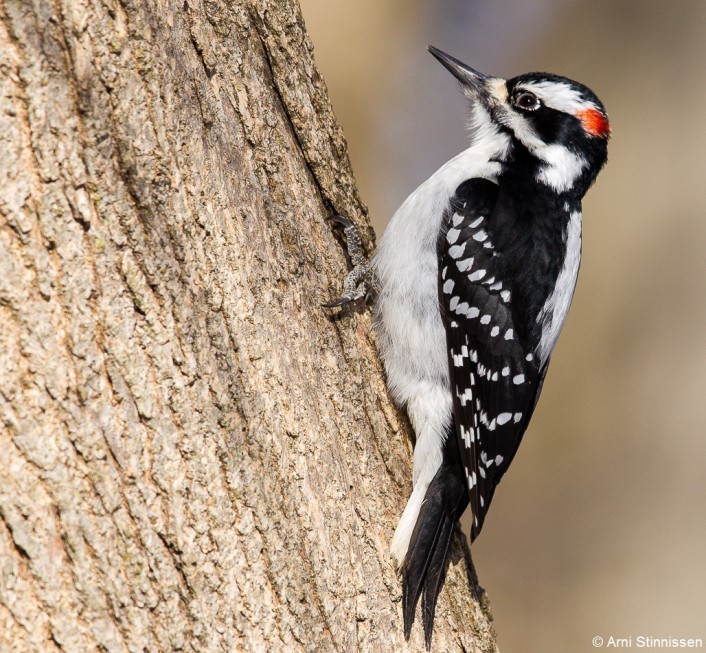I am often asked how to differentiate between a Downy and Hairy Woodpecker, as for many new to Bird watching it seems to be a bit of a challenge. It need not be, even though they do look much alike. The difference in size is the most obvious characteristic, as the Hairy is about 30% larger, but unless seen together for comparison, it might not be useful. The most helpful identifying attribute is the tail. Both species have white outer tail feathers. However, the Downy has black spots on the edges of its outer tail feathers. The outer tail feathers of the Hairy are pure white.
There are other identifiers as well: the Hairy bill is much longer and thicker than that of the Downy; the call of the Downy lowers in pitch, while the Hairy’s call maintains the same pitch. In both species, females lack the red patch the males sport on the back of the head.
Hairy Woodpeckers are among the most widely distributed woodpeckers in North America and found wherever forests exist. They prefer stands of mature trees, uncovering insects with their chisel- shaped bills in their quest for insects. All woodpeckers have feet that are significantly different from most of our songbirds; two toes forward and two back (with the exception of the Three-toed woodpecker which has one less toes). As they climb, the outer rear toes can rotate. They frequently scour the cedar wood siding on our rural home looking for insects that hide in cracks and joints and in the process often drill holes in the wood, the sound of which echoes throughout the neighbourhood, especially during the spring mating season. As with all woodpeckers they have a very long, barbed and sticky tongue which wraps around the entire inside of the skull. When extended, the tongue can reach up to about 13 cm (5 inches) to capture their prey!
Hairy Woodpeckers tend to be monogamous, nesting in cavities which they excavate with their well designed bill. Clutch sizes vary from four to six white eggs. Incubation is between 11-15 days. Young will fledge in about 25 days.
Both the Hairy and Downy Woodpeckers take advantage of food provided at feeders. They will take black oil sunflower seeds periodically, but they prefer a good suet. It is not unusual for us to have both species feeding at our suet feeders at the same time. That said, smaller bird species such as finches and chickadees will fly off and scatter when a Hairy comes to the table!
Written by David A. Homer.

